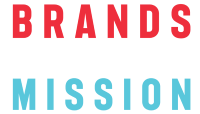In the past two decades it has become clear that corporations are the source of both great wealth and great inequality. The question is how do we achieve one with less of the other, through a new model of enlightened capitalism. Can business models be a part of alleviating real suffering? And what can brands and marketing – at the heart of many of these corporations – do to help?
Meanwhile, at too many consumer goods companies, marketing is stuck. Long-successful practices, pioneered by some of the biggest innovators in the sector, like Procter & Gamble, aren’t getting the traction they once did. Bored consumers are turning from once-powerful mass-market brands to lower-cost private label goods or the latest trend-led, more niche products. Even brands’ substantial investments in social media aren’t moving the needle.
An even bigger problem lies in talent. Premium brands depend on smart, engaged people looking ahead and solving problems for consumers. But talented people have many career options nowadays and they may be more likely to look for work in a technology or financial firm, or a start-up with ambitions to change the world. Why spend your career on incremental improvements to products for people with plenty of stuff already?
It’s time for a new approach, and fortunately one is readily available. Brands can regain their strength in the marketplace by embracing a social mission. Big problems require big companies: their brands have the resources and expertise to responsibly and credibly address the pressing issues on their consumers’ minds. That means going beyond selling the idea of purpose but rather coming up with purposeful solutions. In doing so, brands can regain their place as dominant providers of consumer wants and needs. And the very coveted job of CMO can now have a double meaning. Chief Marketing Officers need to become Chief Mission Officers; let me tell you why.
The Value of “Consumers” in a World that Needs Solutions
Chief Mission Officers can start by appreciating their consumers anew. As I explained in Substack Issue 1, too many governments and nonprofits treat less economically fortunate people as beneficiaries. Sometimes they can rob them of their dignity by considering only their immediate physical needs, to be met by outside experts. I personally experienced this most starkly in providing sanitation in refugee camps, and I have found that treating people as consumers gives back dignity but also responds to aspirations with choices needed to change behaviours.
And this works to meet a wide range of social problems. Take the problem of people not washing their hands with soap. Nonprofits have long recognised the benefits of this practice in reducing a great many diseases. Yet in trying to educate the mother from a low-income household on what she was doing wrong in raising her kids, rather than encouraging her with her limited means, they were often missing the mark. I still remember when I first moved to Unilever, the world’s leading soap manufacturer, and saw a team of bright minds putting all their talents and resources into understanding consumer’s needs. That same mother’s aspirations and dreams took centre stage in providing her with soap, and therefore the hand washing message also took a new turn. The soap brand was taking into consideration the fragrances and colours of soap to appeal to her and her family.
Besides respecting people’s dignity, brands command a wide array of resources that the nonprofit and public sectors often lack. Perhaps most importantly, top talent gets to work on social issues from an angle not thought of before. And one such angle is the behavioural expertise that can get people to overcome their natural skepticism, try out a new product or remind them to use the product at the right time.
Still Many Social Issues to be Addressed
In the few minutes you’ve been reading this article, dozens of children under 5 have died – most of them from preventable diseases. Many more suffer from malnutrition and oral health diseases. And what makes this especially sad is that many of these diseases can be prevented.
The United Nations have enumerated seventeen sustainable development goals (SDGs) to address these concerns. The goals address a wide range of issues, from poverty to climate change to peace and justice. While speaking first to governments and nonprofit organisations, the SDGs also explicitly call on the private sector to contribute. There’s growing realisation that we need a multi-sector approach – and that’s where brands come in.
Marketing as a discipline can make consumption conscientious and improve both society as a whole and the lives of individual customers. By “waging effective altruism”, brands can help not only with poverty and disease, but also with psycho-social challenges. In rich and poor countries, a majority of girls express body dissatisfaction, leading to low self-esteem, depression, and substance abuse.
Dove, a brand within Unilever, embraced the mission of promoting body positivity. As I recount in my book, Brands on a Mission, in the 2000s the brand was struggling to differentiate itself given that rivals had developed competing moisturising cleansers. While continuing conventional marketing efforts, Dove advertising in several markets promoted a diversity of body types and sizes as beautiful. They partnered with academic researchers on “body shaming” to develop methods for changing mindsets. By addressing an issue that every woman in the world was struggling with, this “Real Beauty” campaign gave the brand saliency and power in the marketplace. And today Dove is also the leading provider of body confidence education to young girls around the world.
The Business Rationale of a Mission
Health and wellbeing are the foundation of a good society, the most rewarding business investment in every sense of the term. But as the Dove example illustrates, marketers shouldn’t see a social mission as a kind of charity or philanthropy. It can pay off in brand power that drives long-term business success.
Social missions can also lead to new markets and product innovations that serve unmet consumer needs. The most urgent social problems involve people ignored by most large companies, because their incomes are so low. Large companies can’t justify selling to them but marketers with a social mission can reframe this demand as an investment. Over time, with creativity and scaling, they can create a market where none existed.
Innovations and partnerships for social impact have a way of paying off elsewhere. They create spin-off products and relationships that can benefit the established markets too. Besides the boost in the consumer marketplace, brands on a mission are increasingly attractive to talented young people. They want to work for organisations that stand for improving the world beyond ordinary commerce.
Those young people, however, are also pretty sophisticated about superficial marketing efforts, such as “purpose-washing” or simply writing a cheque. They want the corporations they purchase from to be directly engaged in the work of solving big social and environmental problems. That’s why companies need to treat this challenge as a mission, not a short-term tactic to improve brand awareness. And it must be a measurable, actionable mission that eventually creates a self-sustaining business model.
But companies don’t need to do it alone. Steve Miles, former leader of the Dove brand (and my former boss), put it best,
“It is a great time to be a marketer on a mission because both the public and private sectors are interested in finding a way to work together”.
Chief Marketing Officers are fighting to stay relevant in a C-suite increasingly focused on product and operational challenges. They need to stand up for the enduring power and possibility of brands. The best way to do that is to connect with the deep-seated concerns of consumers. In our time, as we reorient capitalism towards broader progress, that means embracing a social mission. And fully owning the Mission part of the CMO title.



